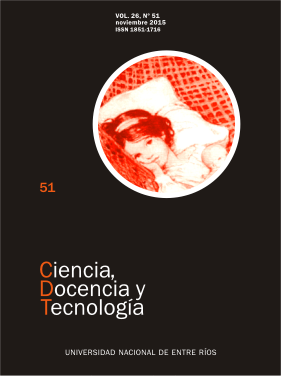Resumo
Um dos traços da chamada sociedade da informação (Yoneji Masuda, 1980) é a comunicação permanente através de suportes tecnológicos entre os indivíduos que a compõem. Os meios de comunicação de massas e, posteriormente, a massificação da Internet mudaram a maneira como as pessoas se comunicam. Assim, uma das suas características mais relevantes é o que tem sido chamado de hiperconectividade (Quan-Haase e Wellman, 2005, 2006). Neste trabalho tenta-se revisar esse conceito e mostrar alguns resultados do projeto “Uso da Web, competências, motivação e atitude dos estudantes de pedagogia da área de humanidades a respeito das TIC e da cultura digital”, realizado em Santiago de Chile, sobre o uso das redes sociais pelos futuros professores dessas disciplinas, que pertencem à geração digital ou Net Generation (Tapscott 1997, 2009).
Referências
AREA, M. 2008. “Las redes sociales en Internet como espacios para la formación del profesorado”. Razón y palabra N° 63. Disponible en http://www.razonypalabra.org.mx/n63/marea.html [15 agosto 2014].
AREA, M.; PESSOA, T. 2012. “De lo sólido a lo líquido: las nuevas alfabetizaciones ante los cambios culturales de la Web 2.0”. Comunicar N°38, vol. XIX, pp. 13-20.
BAUDRILLARD, J. 1994. El otro por sí mismo. Barcelona: Anagrama.
BOYD, D. M.; ELLISON, N. B. 2008. “Social Network Sites: Definition, History, and Scholarship”. Journal of Computer-Mediated Communication 13, pp. 210-230.
CÁCERES ZAPATERO, M. D.; BRÄNDLE, G.; RUIZ SAN-ROMÁN, J. A. (2013): “Comunicación interpersonal en la web 2.0. Las relaciones de los jóvenes con desconocidos”, en Revista Latina de Comunicación Social, 68. La Laguna (Tenerife): Universidad de La Laguna, pp. 436 - 456.
CALDEVILLA DOMÍNGUEZ, D. 2010. “Las Redes Sociales. Tipología, uso y consumo de las redes 2.0 en la sociedad digital actual”. Documentación de las Ciencias de la Información, Vol. 33, pp. 45-68.
CASTELLS, M. 2001. La era de la información. Economía Sociedad y Cultura. Vol. II. El poder de la información. México: Siglo XXI Editores.
DE KERCKHOVE, D. 1999. Inteligencias en conexión. Hacia una sociedad de la Web. Barcelona: Gedisa.
ECHIBURÚA, E.; DE CORRAL, P.. 2010. “Adicción a las nuevas tecnologías y a las redes sociales en los jóvenes: un nuevo reto”. Adicciones, Vol. 32, N° 2, pp. 91-96.
FABBRI, P. 2013. “2013: il centone saussuriano (2013)”. E/C. Revista dellÁssociazione italiana Studi semiotici. Disponible en http://www.ec-aiss.it/rubriche_fisse/polliceversus_v.php?recordID=233 [20 septiembre 2013].
FLORES, J. M. 2009. “Nuevos modelos de comunicación, perfiles y tendencias en las redes sociales”. Comunicar N°33, vol. XVII, pp. 73-81.
FREUD, S. 2010. El malestar en la cultura. Madrid: Alianza Editorial.
HEIDEGGER, M. 2007. Filosofía, ciencia y técnica. Santiago: Editorial Universitaria.
HELTON, B. 2011. “The Effects of Facebook Habits on Academic Success”. Disponible en http://www.lagrange.edu/resources/pdf/citations/2011/19_helton_psychology.pdf [10 de agosto 2013].
KOCK, N. 2007. Systems Analysis & Design Fundamentals. A Business Process Redesign Approach. Thousand Oaks: Sage Publications.
LÉVY, P. 2007. Cibercultura. La cultura de la sociedad digital. México: Anthropos.
MASUDA, Y. 1984. La sociedad informatizada como sociedad post-industrial. Madrid: Fundesco Tecnos.
MCQUAIL, D. 2000. Introducción a la teoría de la comunicación de masas. Barcelona: Paidós.
NASS, C.; OPHIR, E.; WAGNER, A. 2009. “Cognitive Control in Media Multitaskers”. Proceedings of the National Academy of Sciences. 106.37: 15583-87.
PRENSKY, M. 2001. “Digital Natives, Digital Immigrants”. On the Horizon, MCB University Press, Vol. 9, Nº 5, pp. 1-6.
PRZYBYLSKI, A.; MURAYAMA, K.; DEHAAN, C.R.; GLADWELL, V. 2013. “Motivational, emotional, and behavioral correlates of fear of missing out”. Computers in Human Behavior N° 29, pp. 1841-1848.
QUAN-HAASE, A.; WELLMAN, B. 2005. “How Computer-Mediated Hyperconnectivity and Local Virtuality Foster Social Networks of Information and Coordination in a Community of Practice”. International Sunbelt Social Network Conference. Redondo Beach, California.
________________2006. “Hyperconnected Net Work: Computer-Mediated Community in a High-Tech Organization.” The Firm as a Collaborative Community: Reconstructing Trust in the Knowledge Economy, edited by Charles Heckscher and Paul Adler. New York: Oxford University Press, 281–333.
QUITNEY ANDERSON, J.; RAINIE, L. 2009. Ubiquity, Mobility, Security. The Future of the Internet. Vol 3. Amherst, NY: Cambria Press.
SAINZ PEÑA, R. M. (Coord.) 2012. La sociedad de la información en España 2011. Madrid: Ariel y Fundación Telefónica. Disponible en: http://e-libros.fundacion.telefonica.com/sie11/aplicacion_sie/ParteA/datos.html [18 de junio 2013].
SCOLARI, C. 2009. “DIGITAL ECO_LOGY”. Information, Communication & Society. 12:1, pp. 129-148.
SEBEOK, T. 1996. Signos: una introducción a la Semiótica. Buenos Aires, Paidós.
STIEGLER, B. 2002. La técnica y el tiempo. Hondarribia, Editorial Hiru.
SUBSECRETARIA DE TELECOMUNICACIONES. 2014. Sector telecomunicaciones. Disponible en http://www.subtel.gob.cl/images/stories/apoyo_articulos/informacion_estadistica/informe_estadistico_subtel_q1_2014_v2.pdf [6 de junio de 2014].
TAPSCOTT, D. 1998. Growing Up Digital: The Rise of the Net Generation. New York: McGraw-Hill.
______________2009. Grown Up Digital: How the Net Generation Is Changing Your World. New York: McGraw-Hill.
UL HAG, A.; CHAND, S. 2012. “Pattern of Facebook usage and its Impact on Academic Performance of University Students: A Gender Based Comparison”. Bulletin of Education and Research December 2012, Vol. 34, No. 2, pp.19-28.
WALTHER, J. B. 1996. “Computer-Mediated Communication: Impersonal, Interpersonal, and Hyperpersonal Interaction”. Communication Research, Vol. 23, pp. 3-43.
Os autores detêm os direitos autorais e concedem ao periódico o direito de ser a primeira publicação do trabalho, bem como licenciando-o sob uma Creative Commons Attribution License que permite que terceiros compartilhem o trabalho com um reconhecimento da autoria do trabalho e inicial da publicação nesta revista. Todo o conteúdo é publicado sob a licença internacional Creative Commons 4.0: Atribuição-Não-Comercial-Compartilhamento pela mesma.

